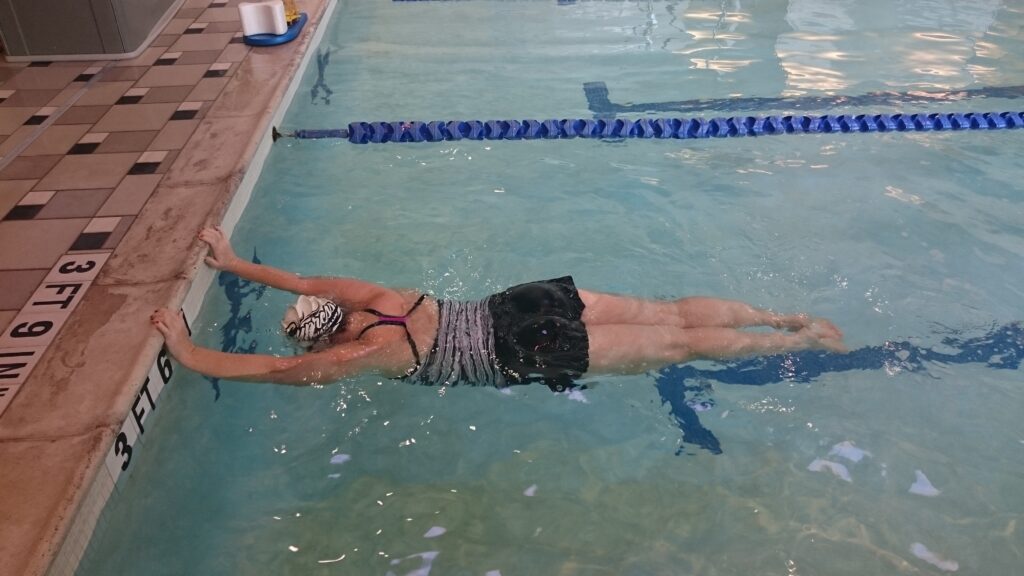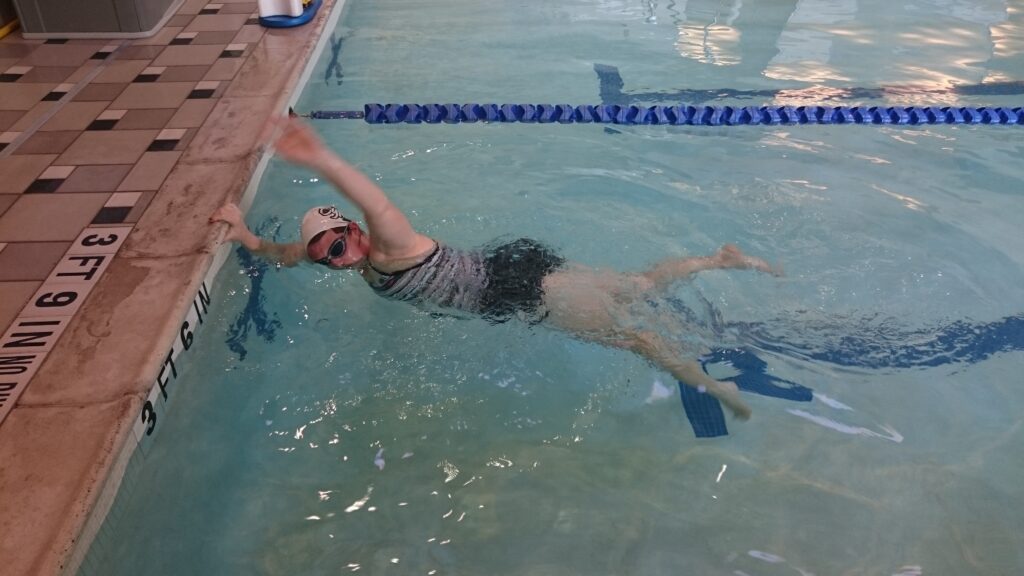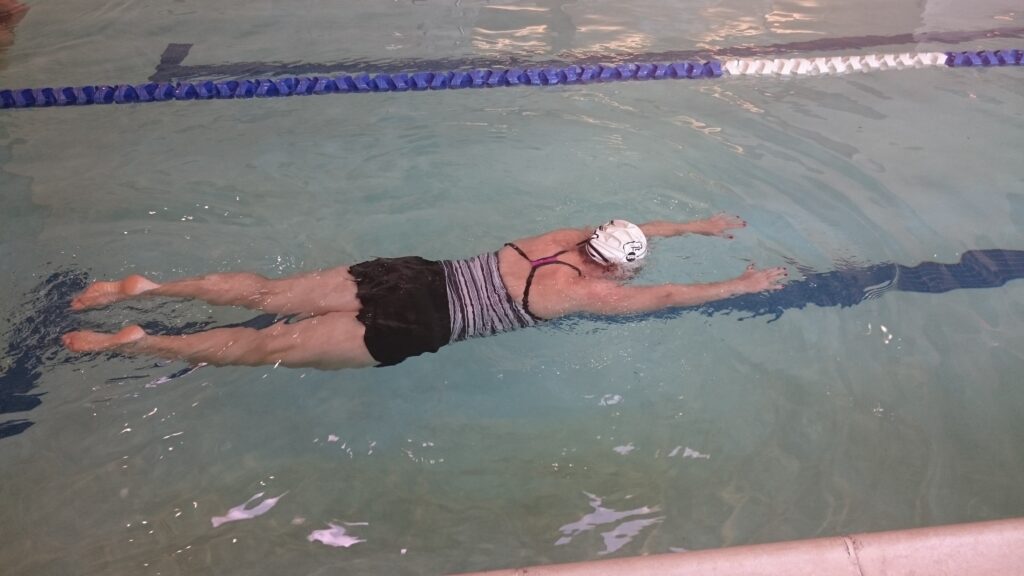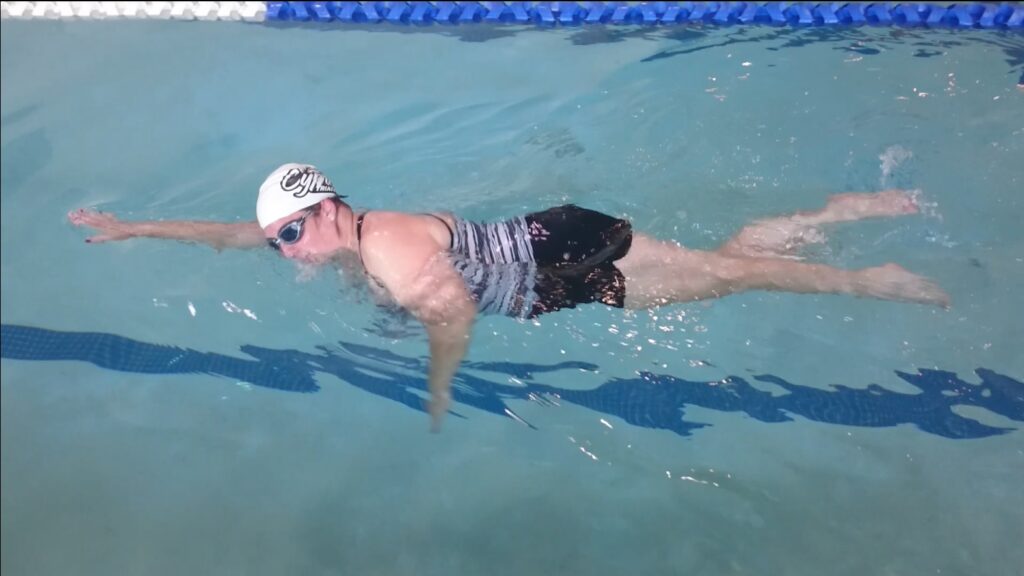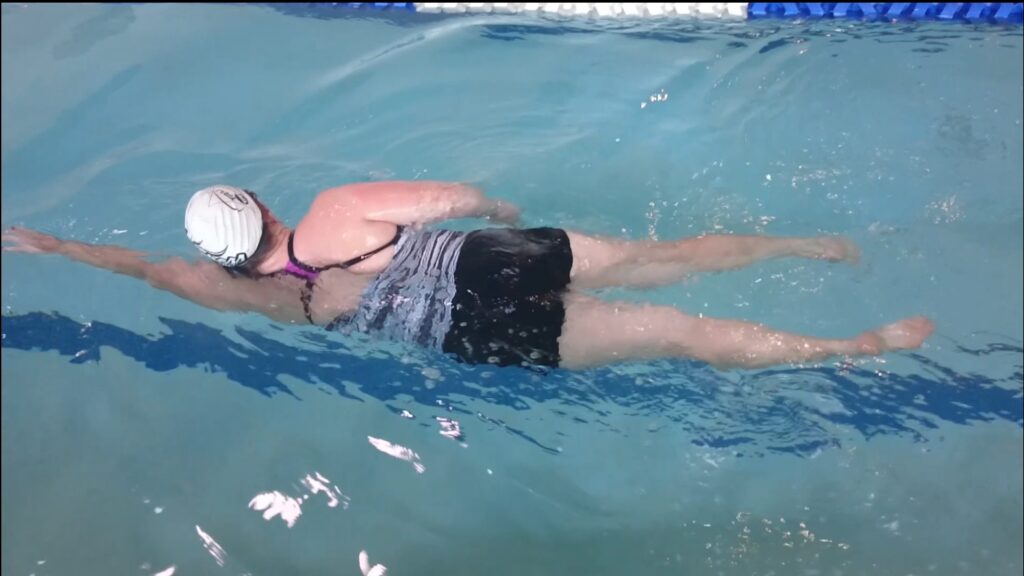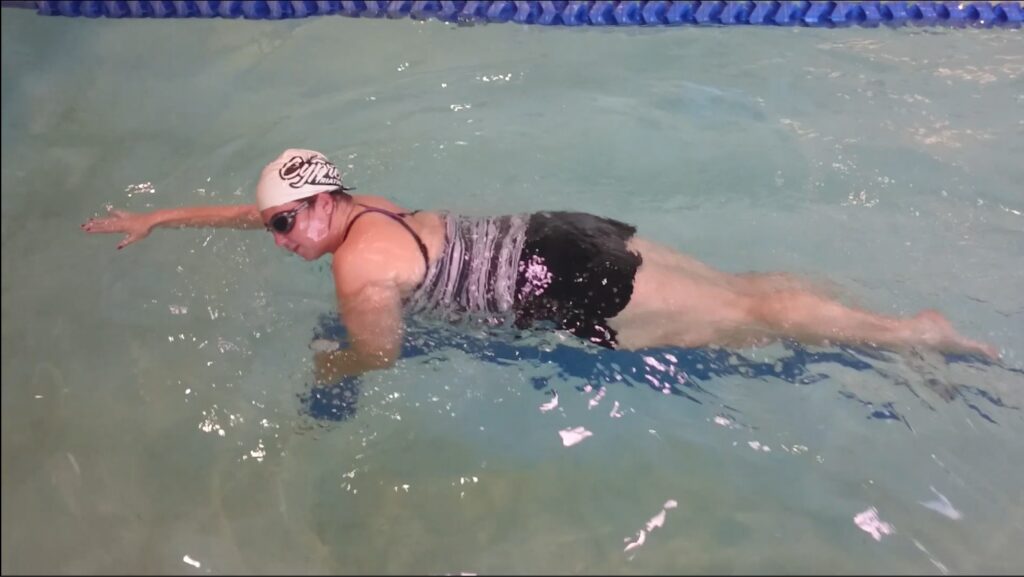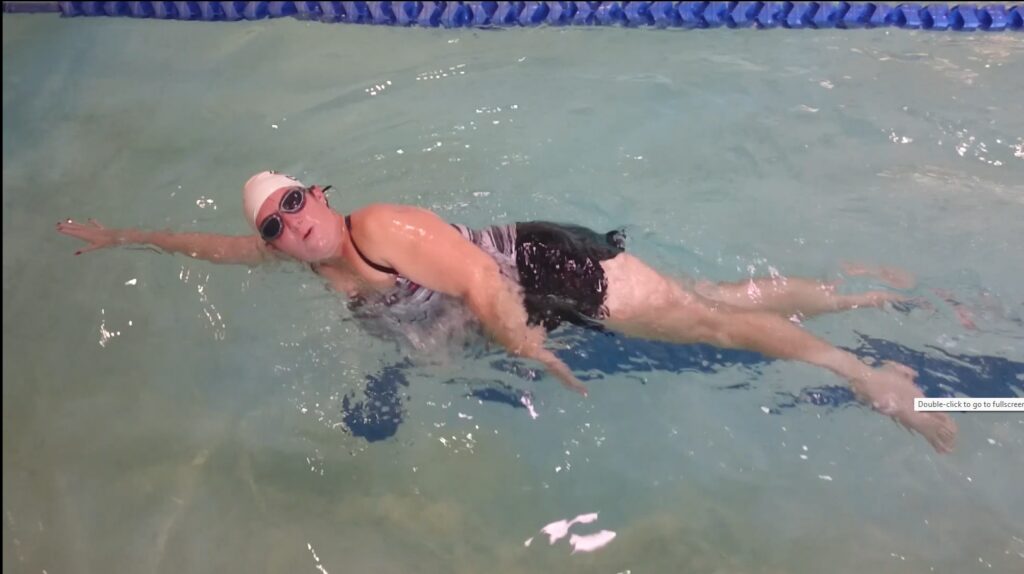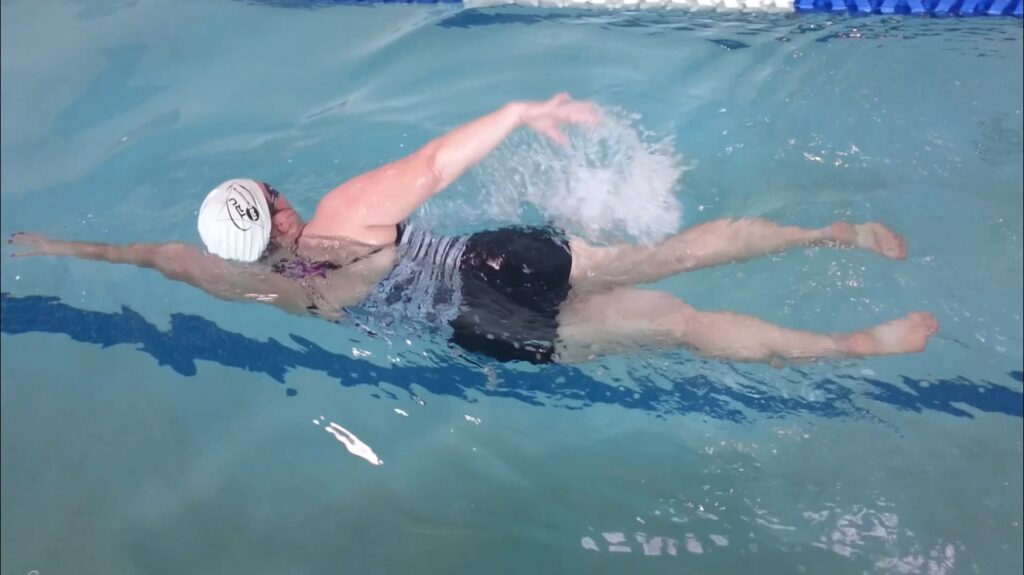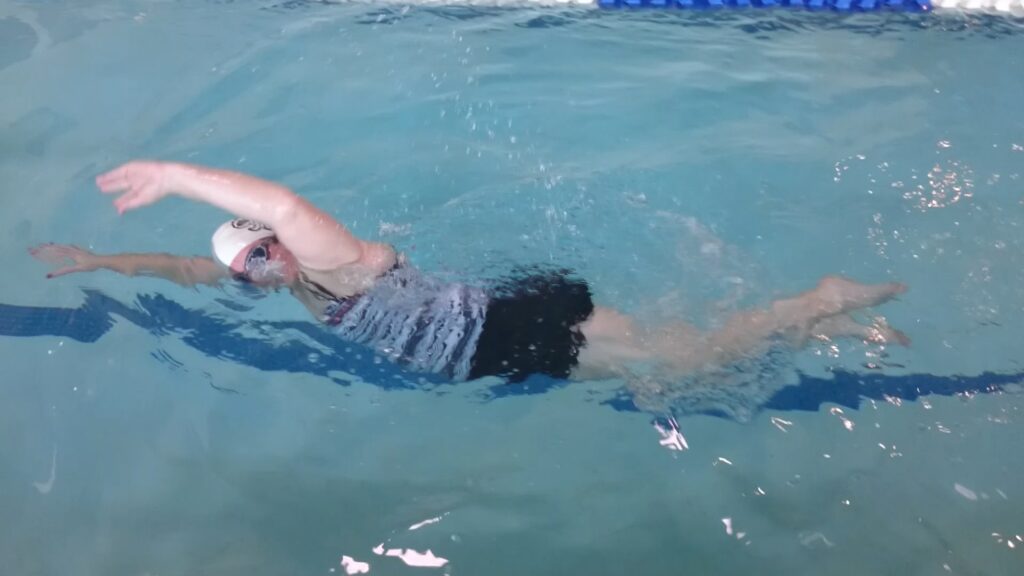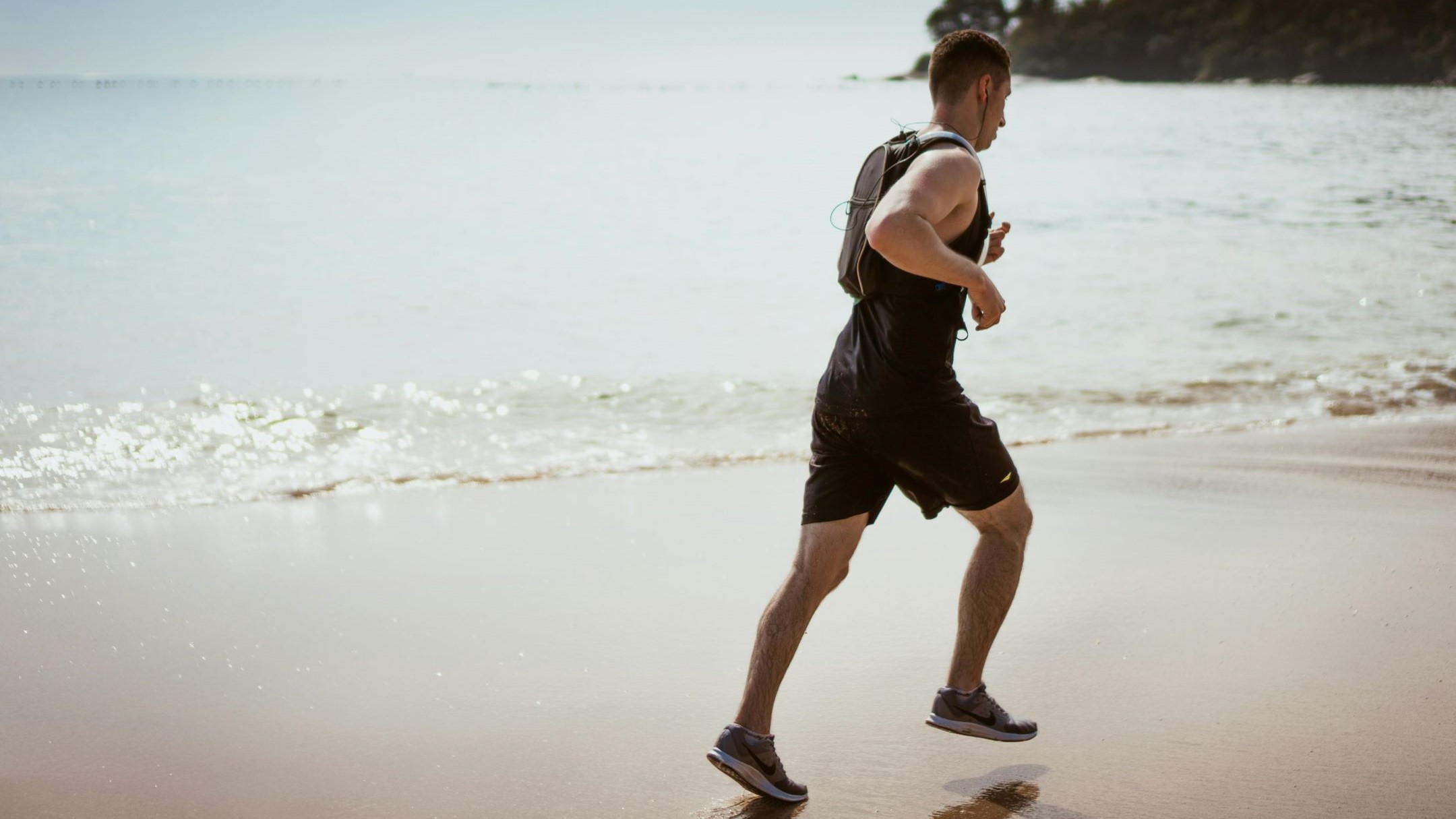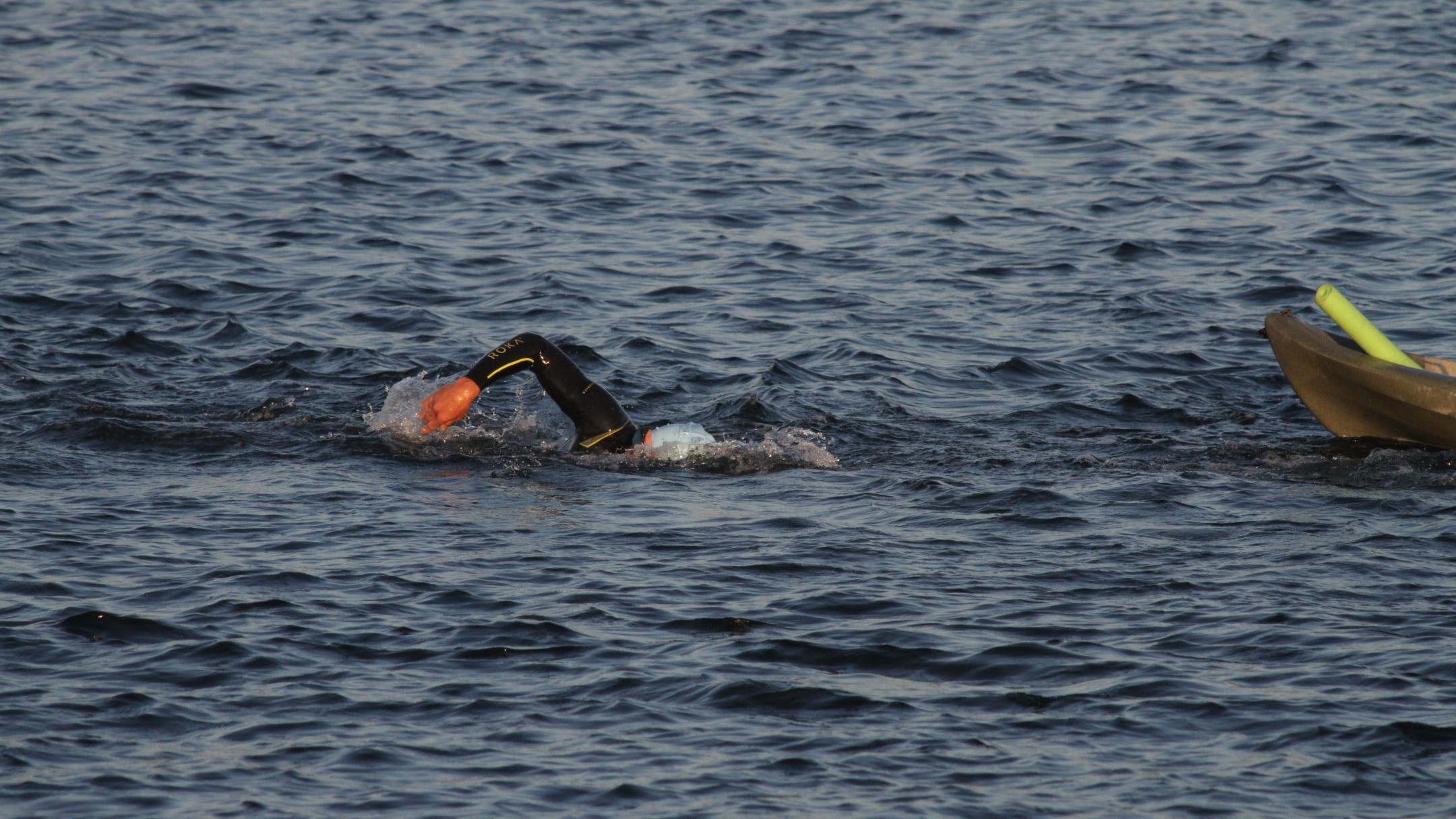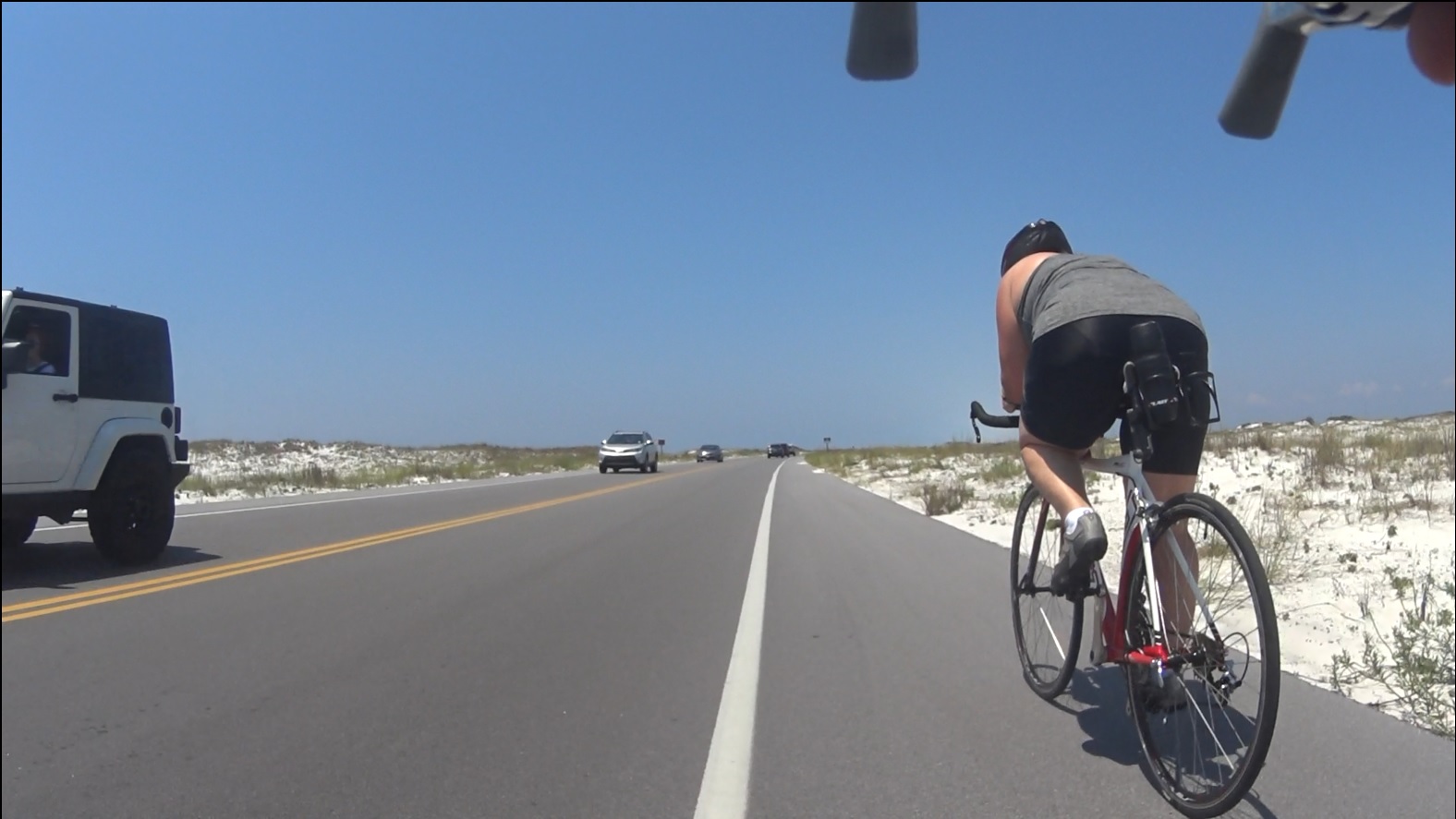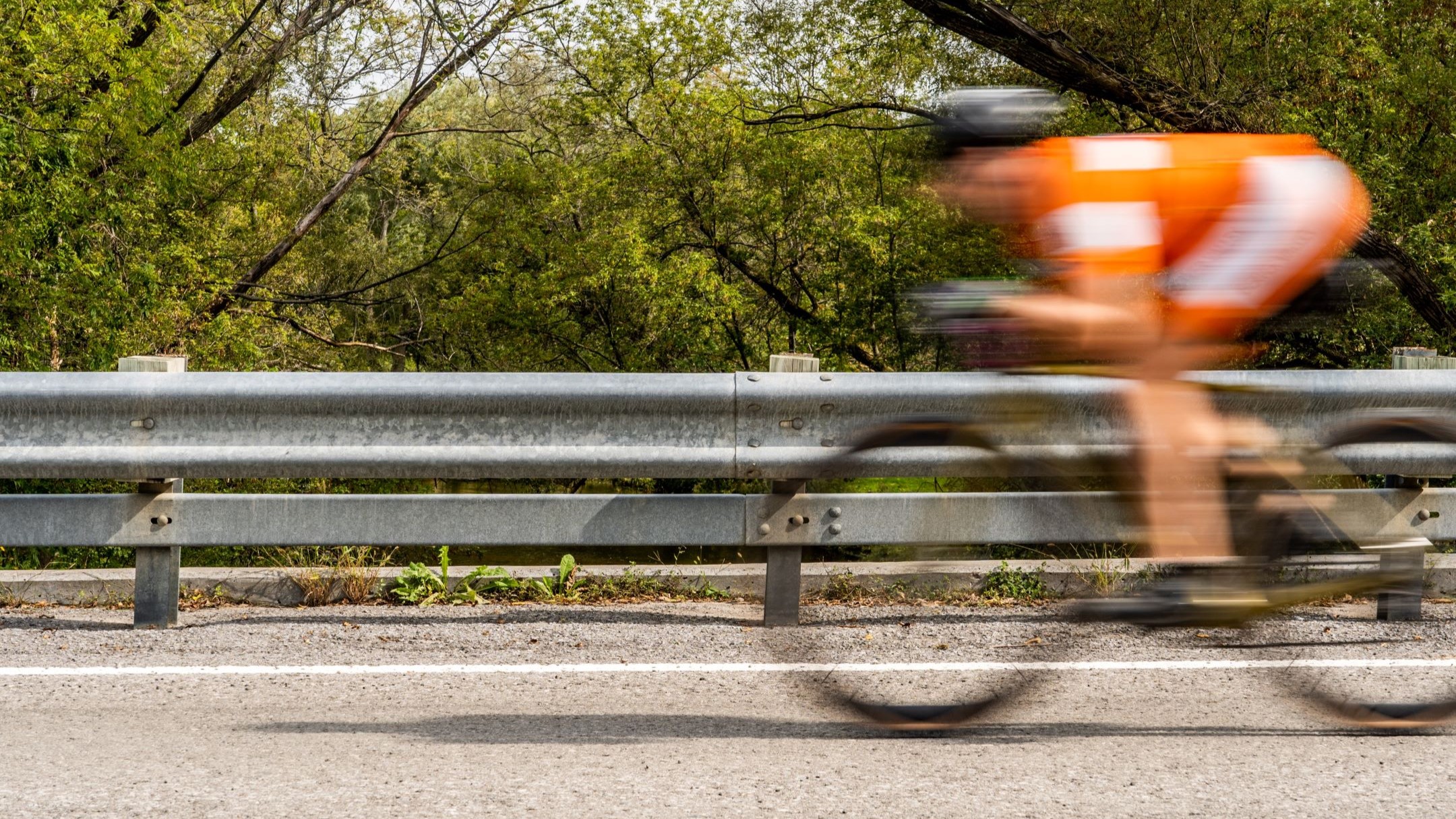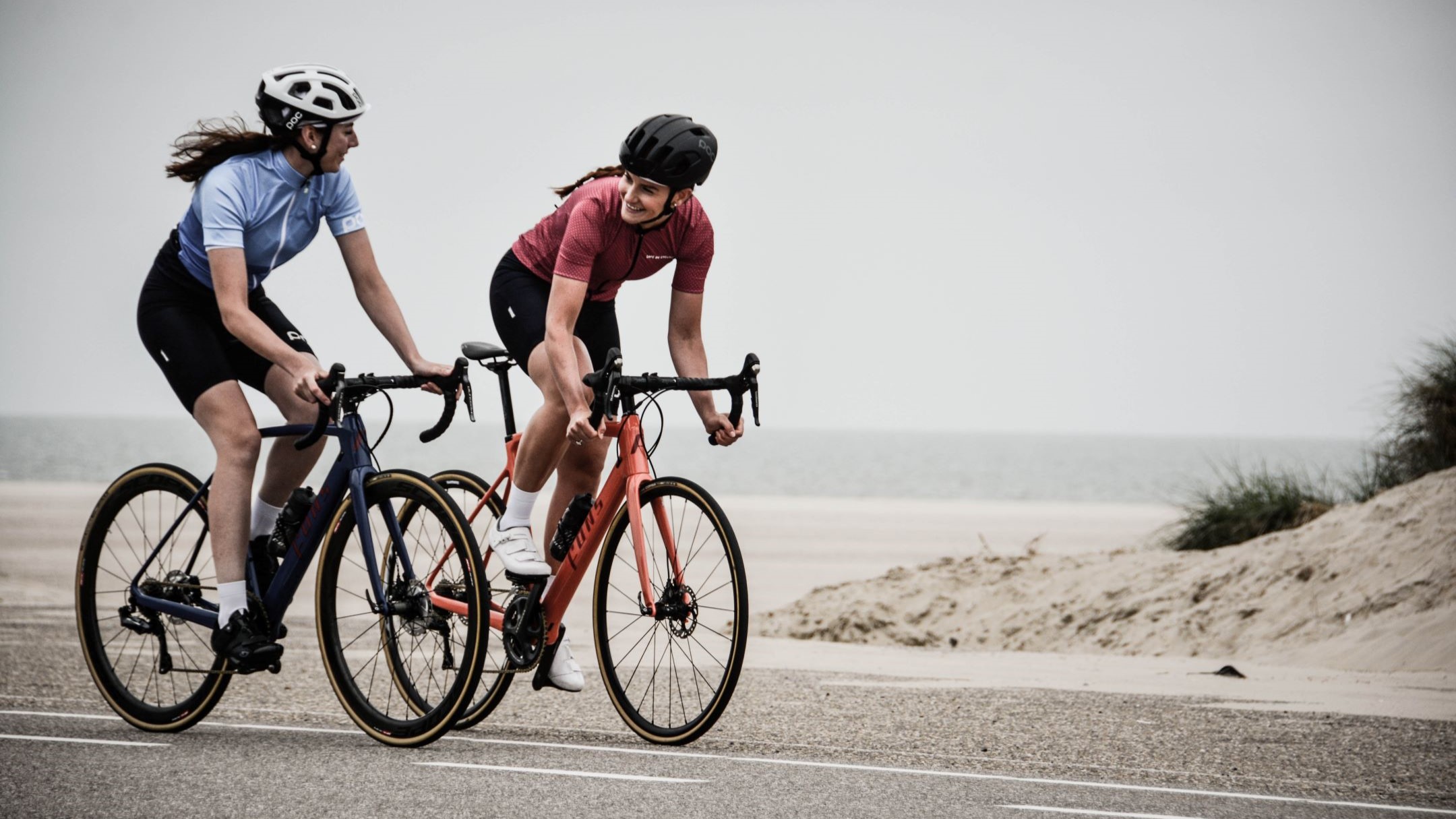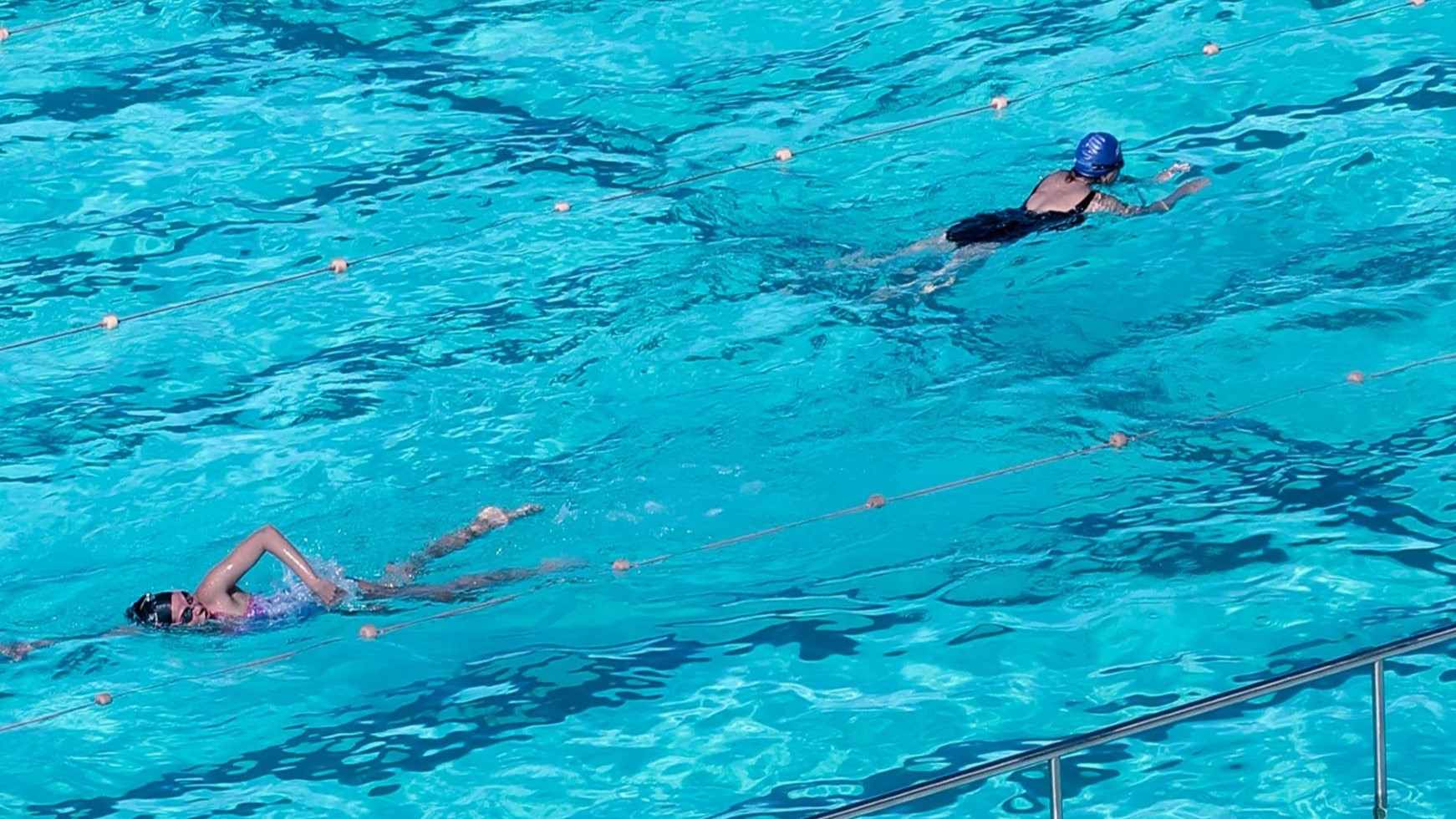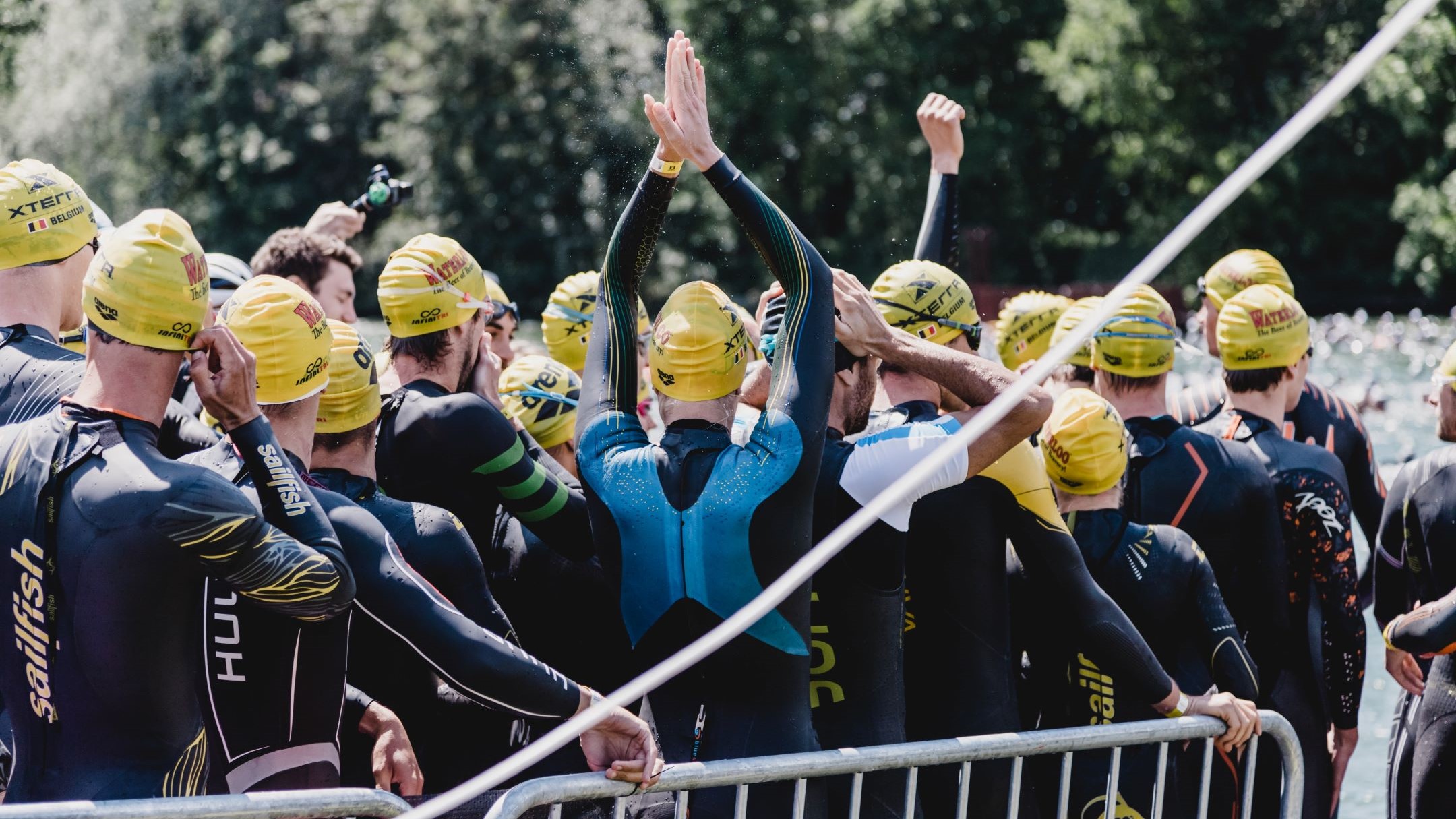Your hand entry back into the water should be fingertips first. Entry can begin anywhere from the shoulder forward. Again, this is for your comfort to avoid injury. You should now be back in the Superman position again.
Now that you have done one side, you do the exact same technique for the other side. Do a few strokes to feel the pattern as it is sort of like dancing! Breathe when you need to! Blow out air when your face is under water, not above. Do not hold your breath!
As you get more and more comfortable putting the strokes together, see if you can make it all the way down the pool (about 25 yards or meters). If your pool is longer, go as far as you can go comfortably.
See the video below to see what it looks like as you put it all together.

